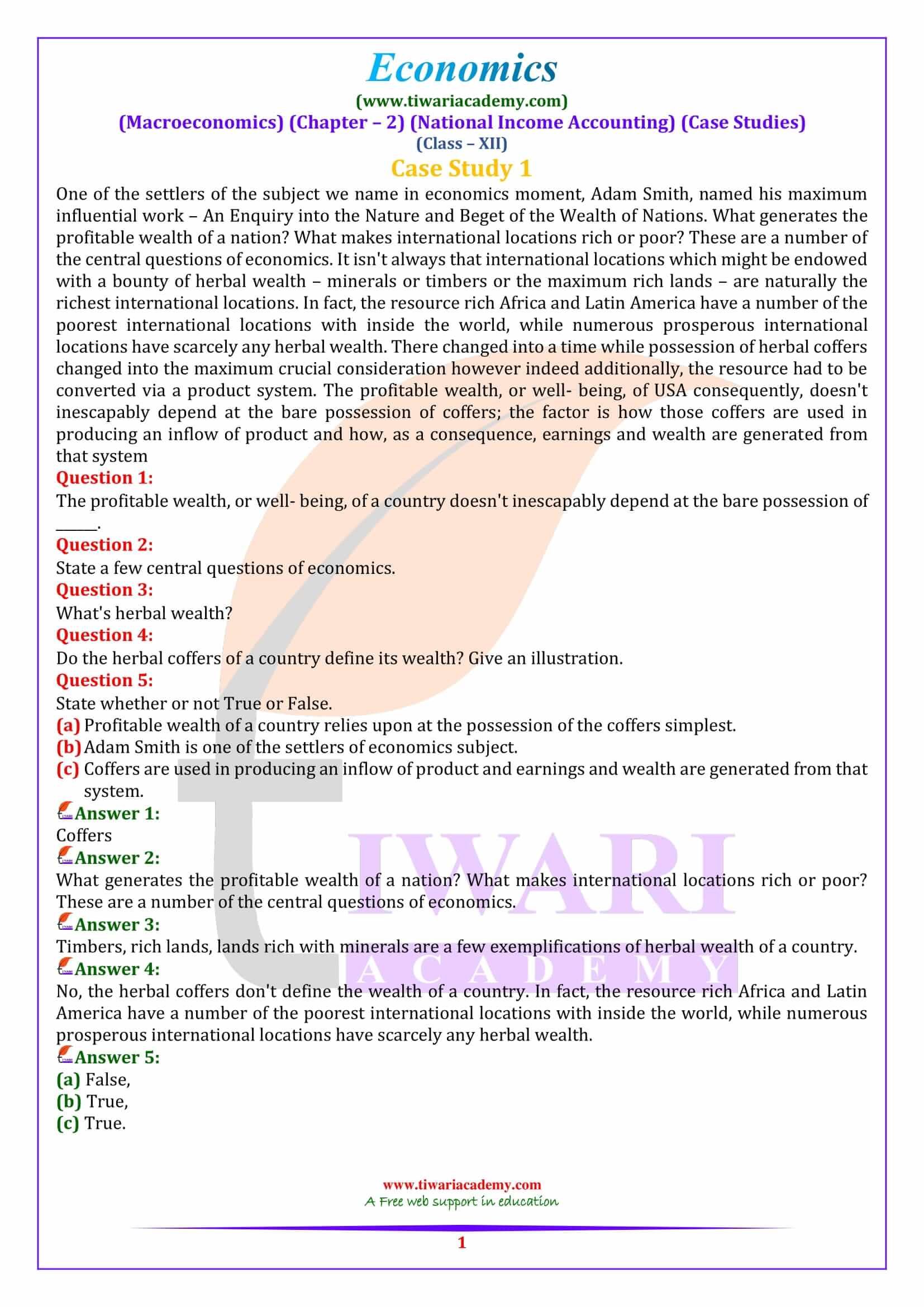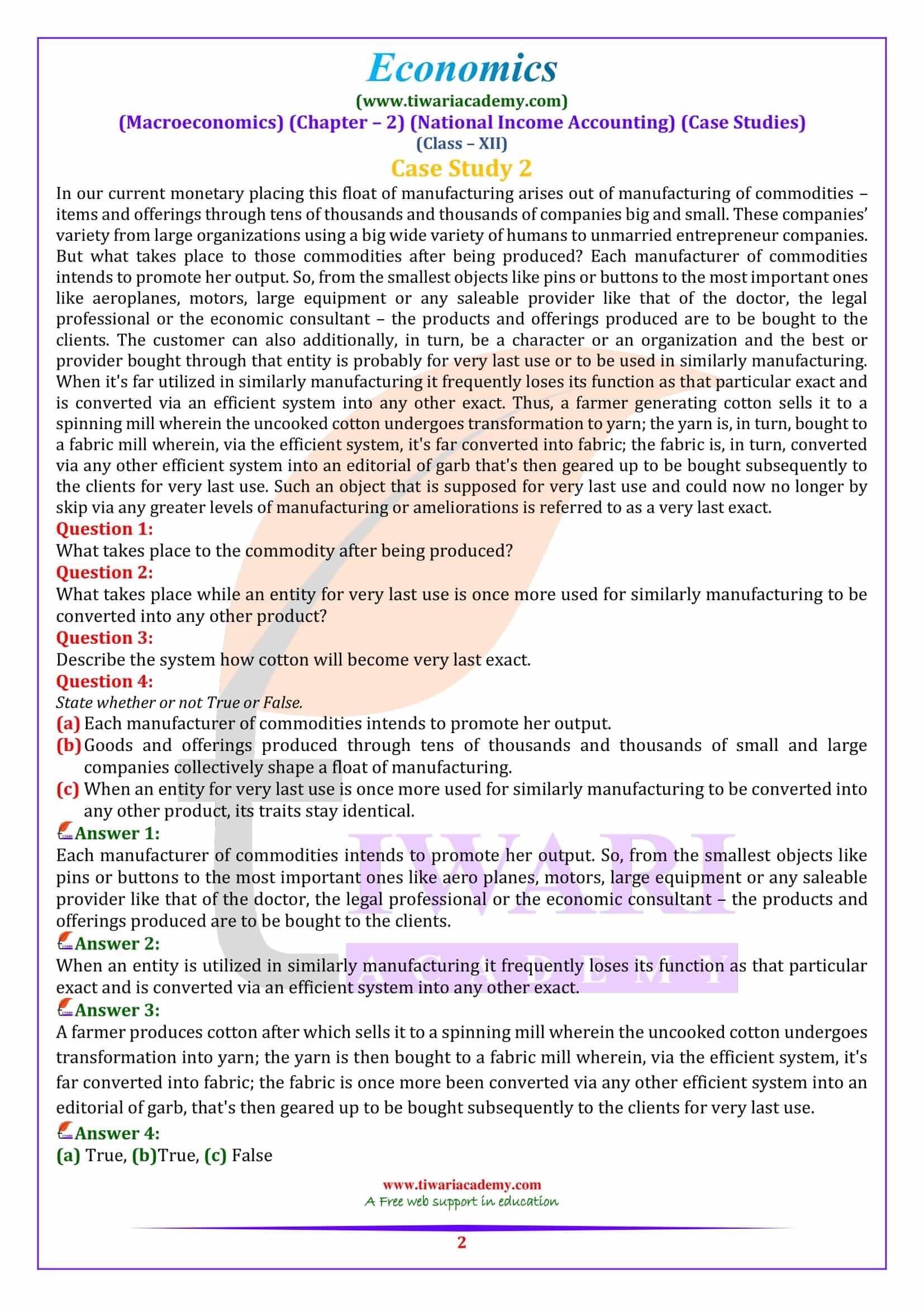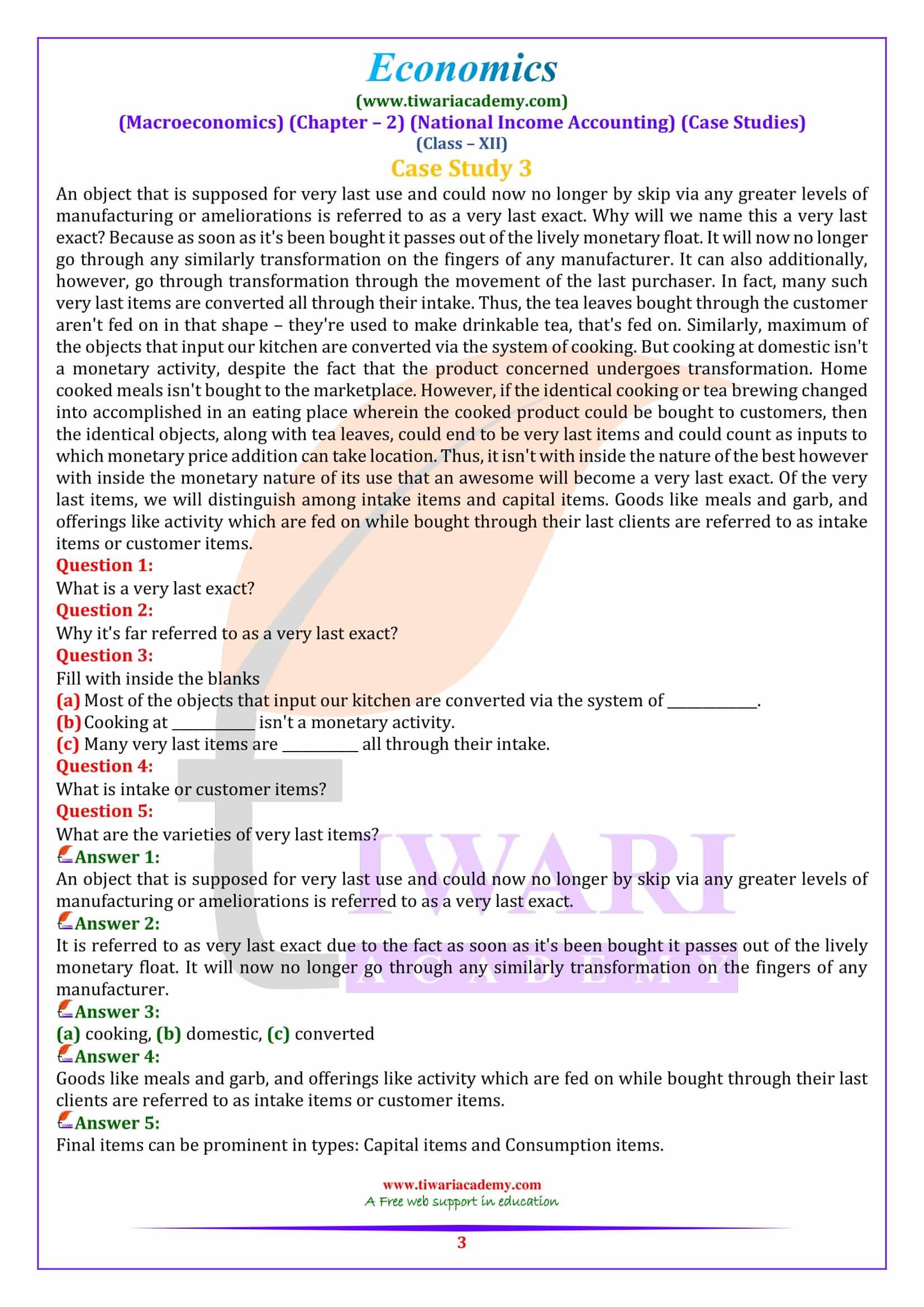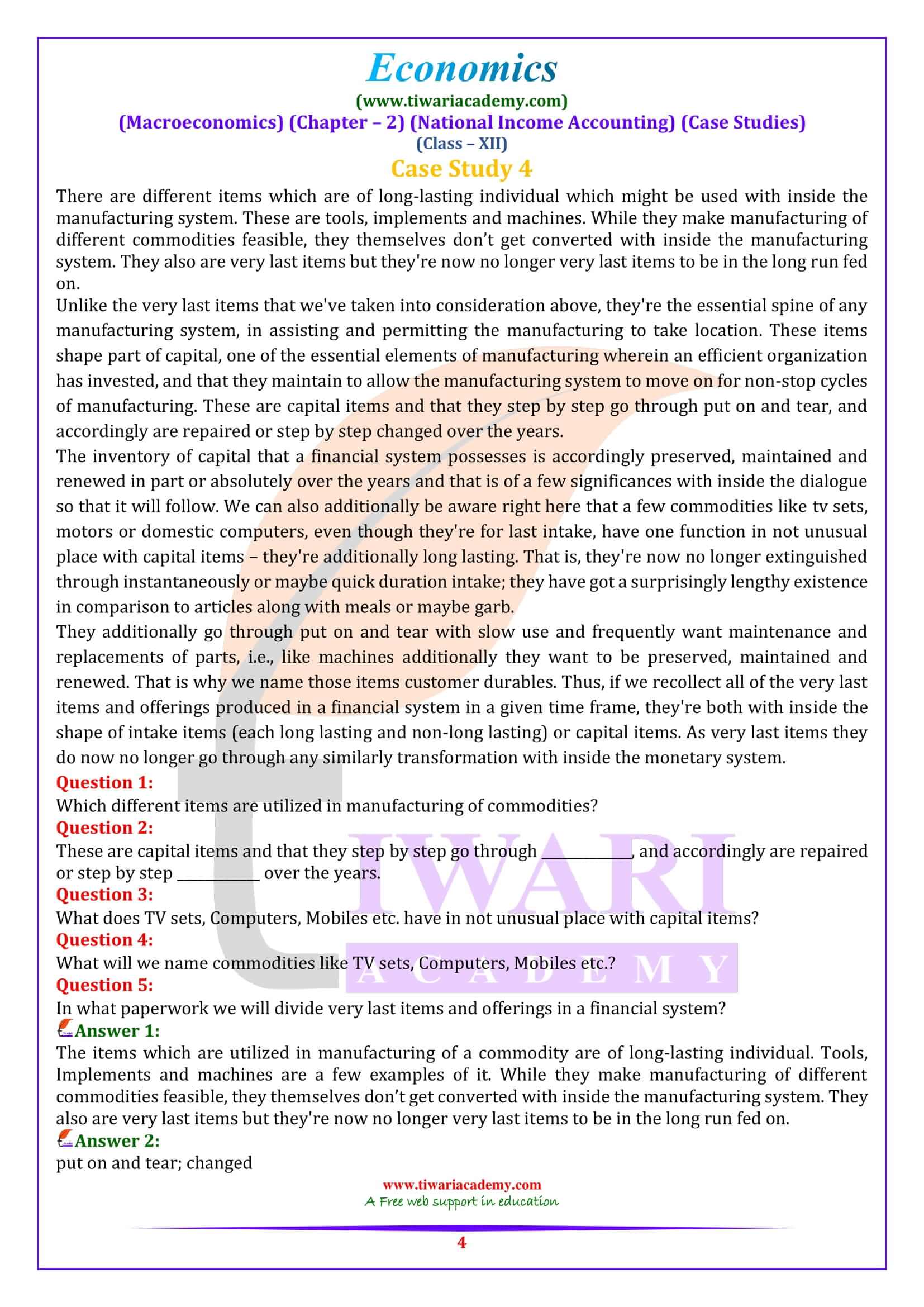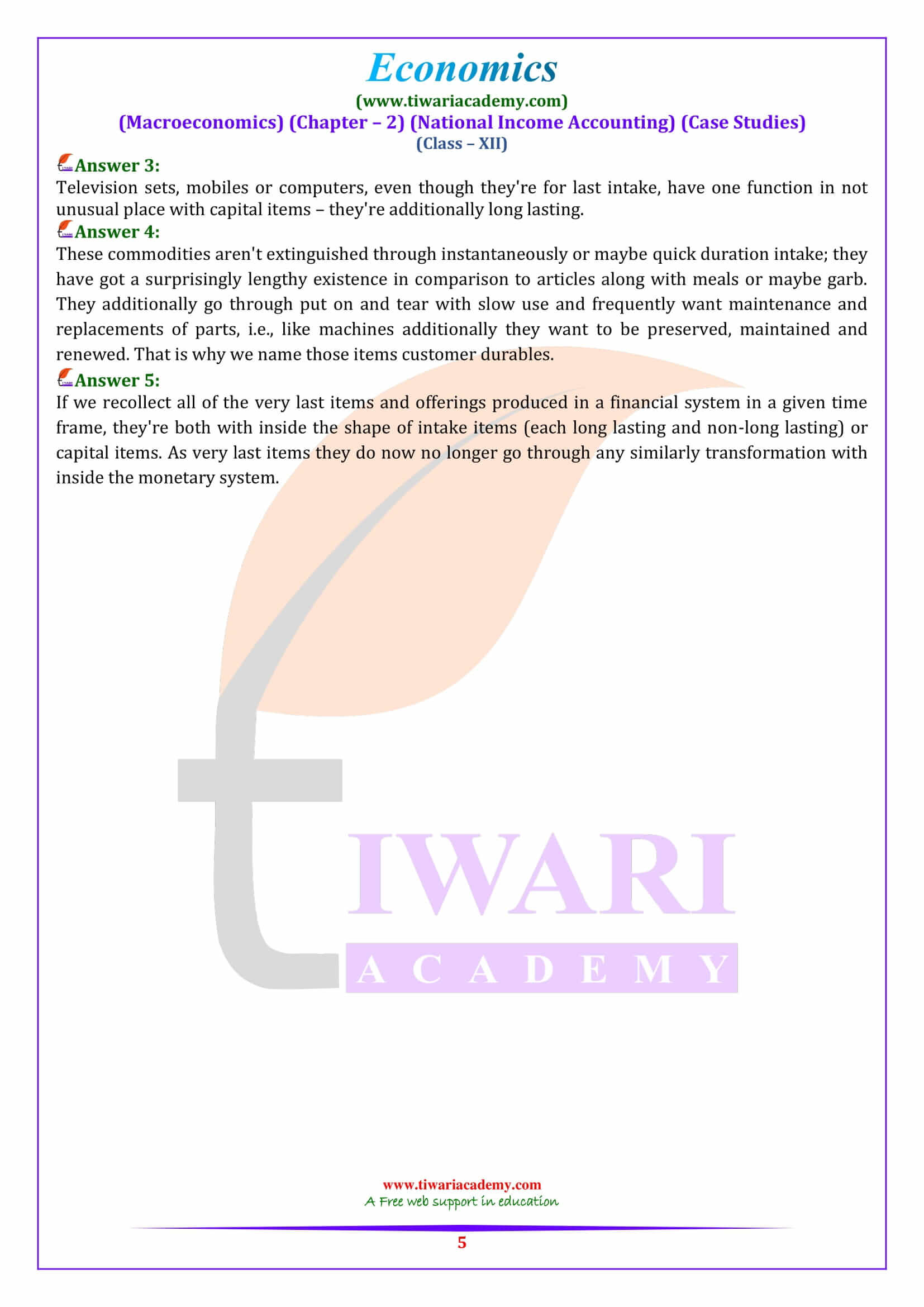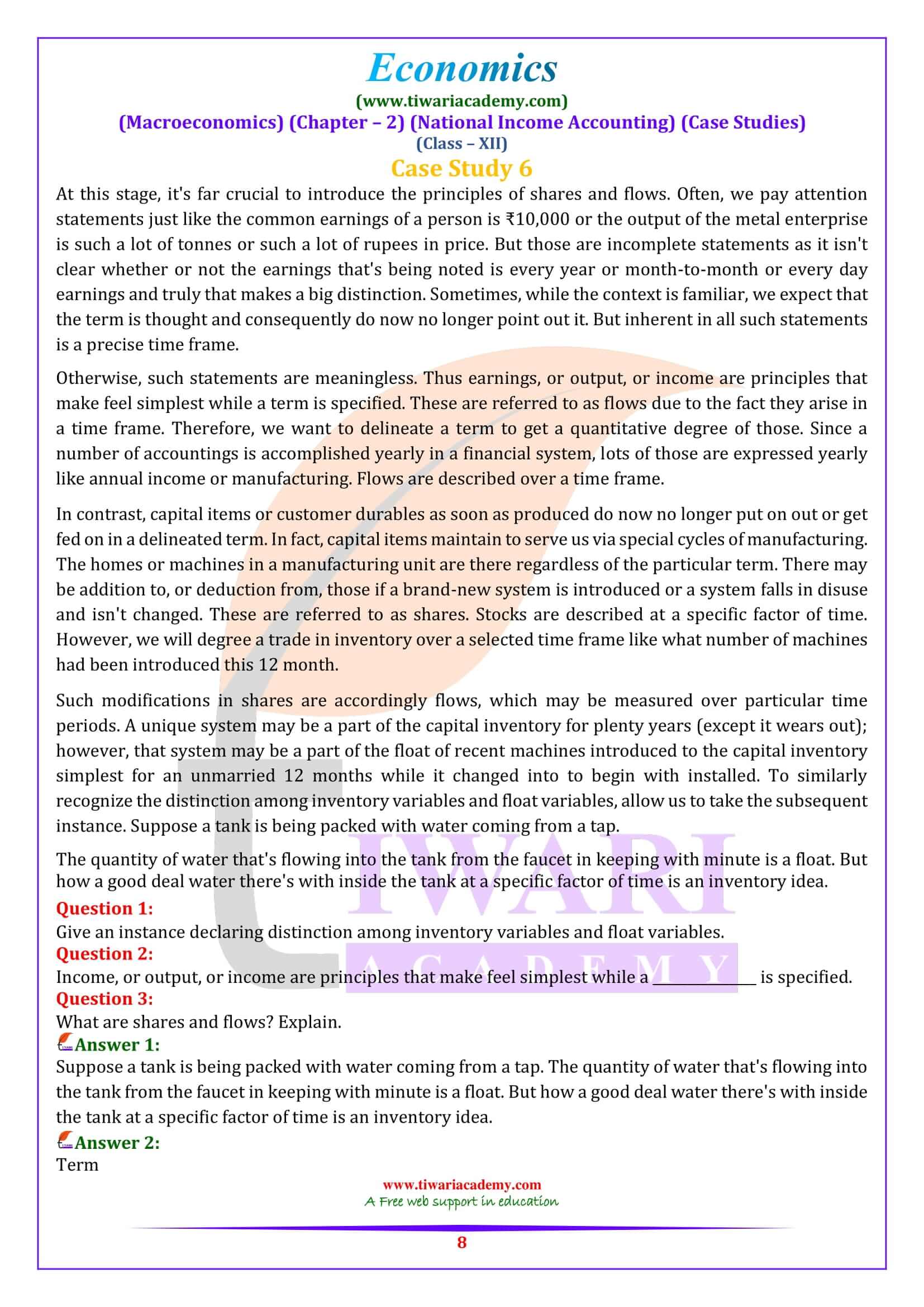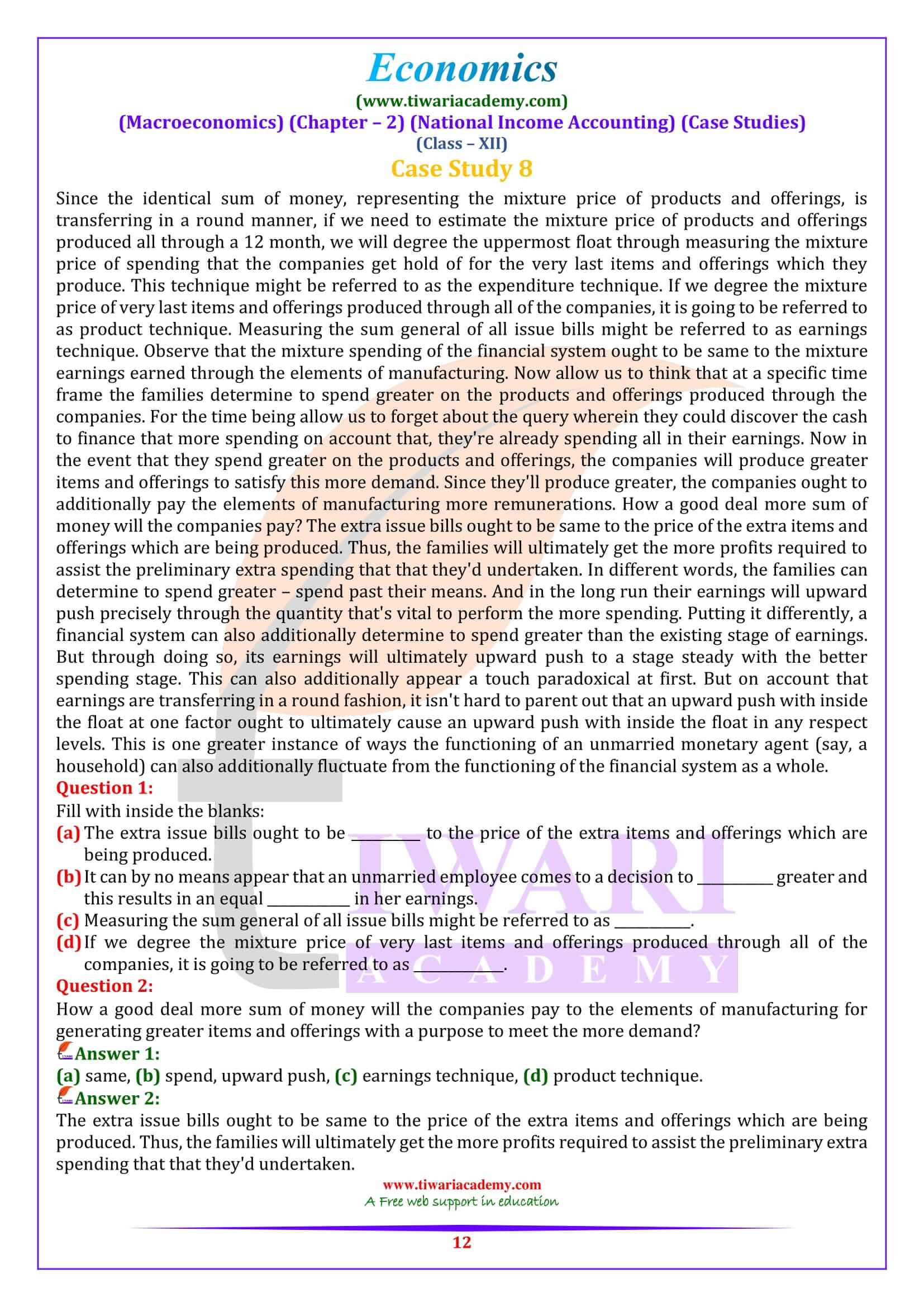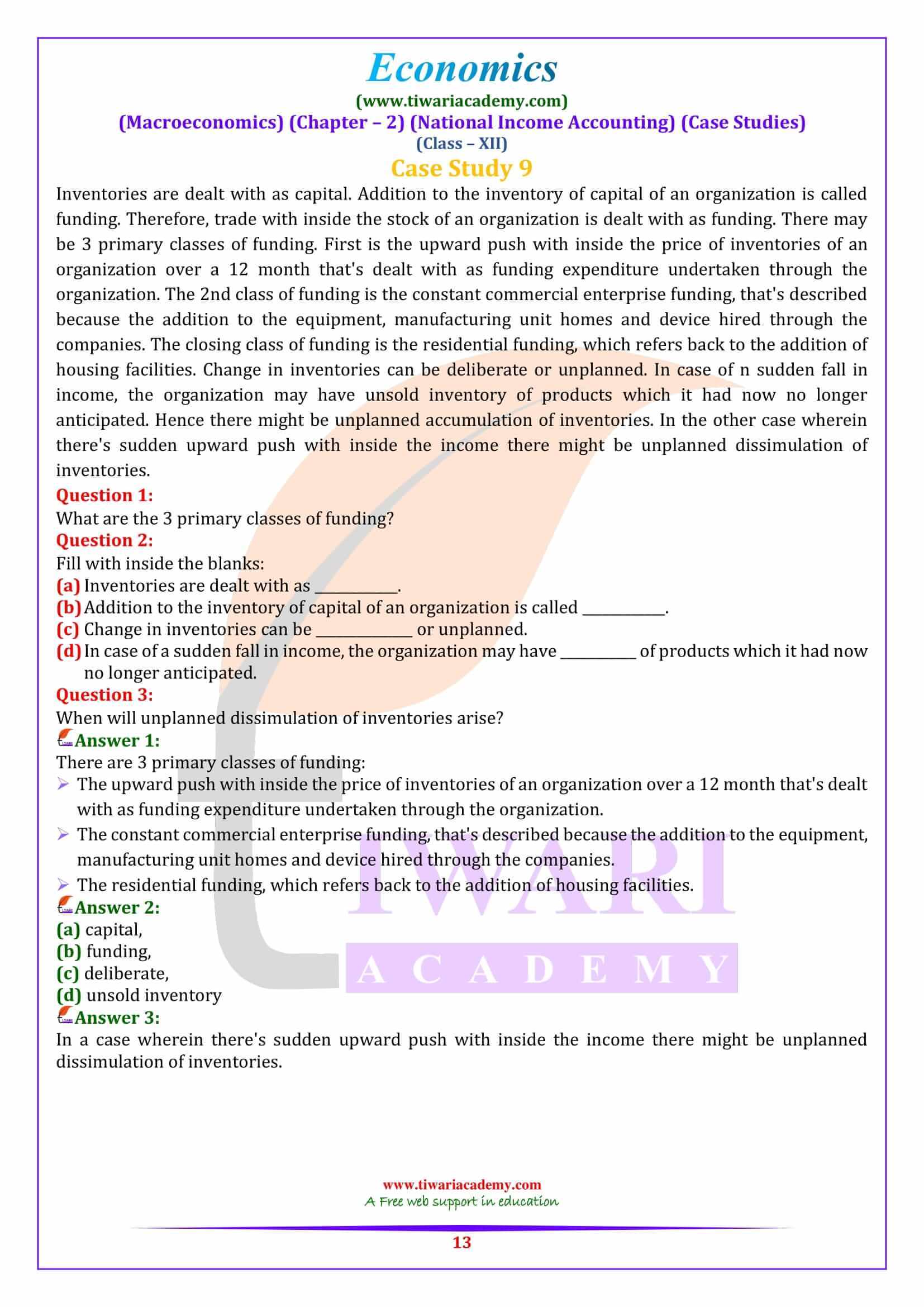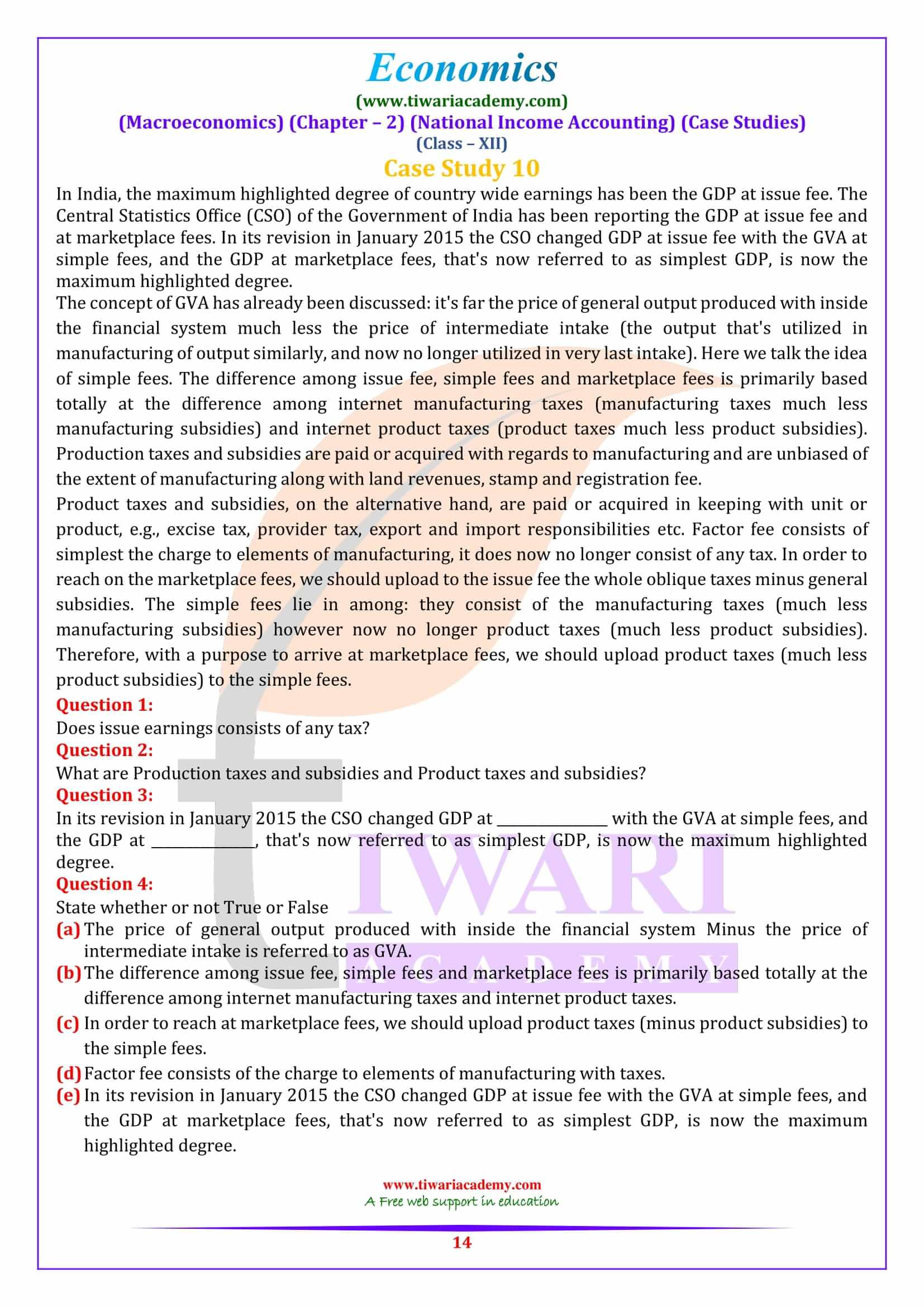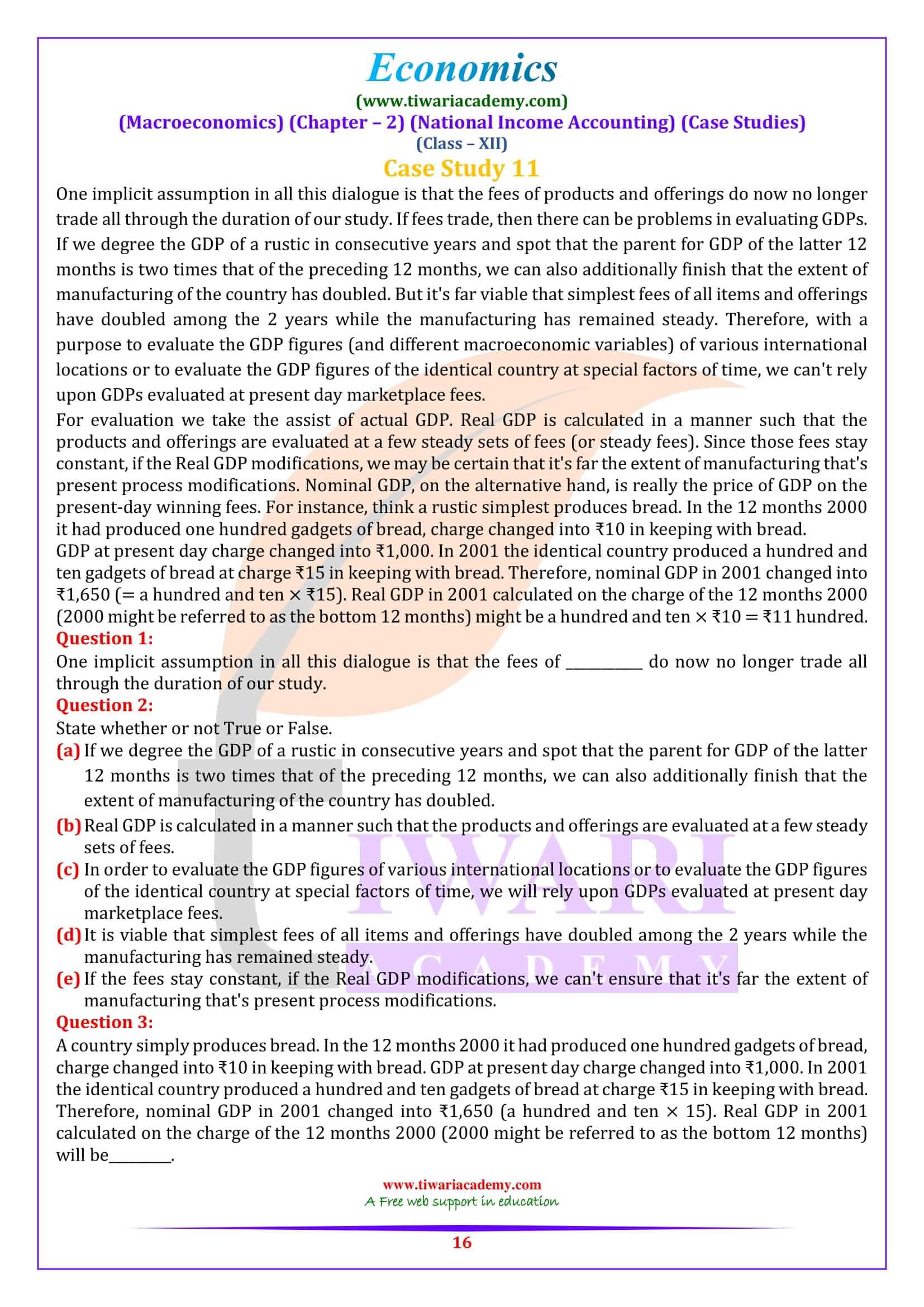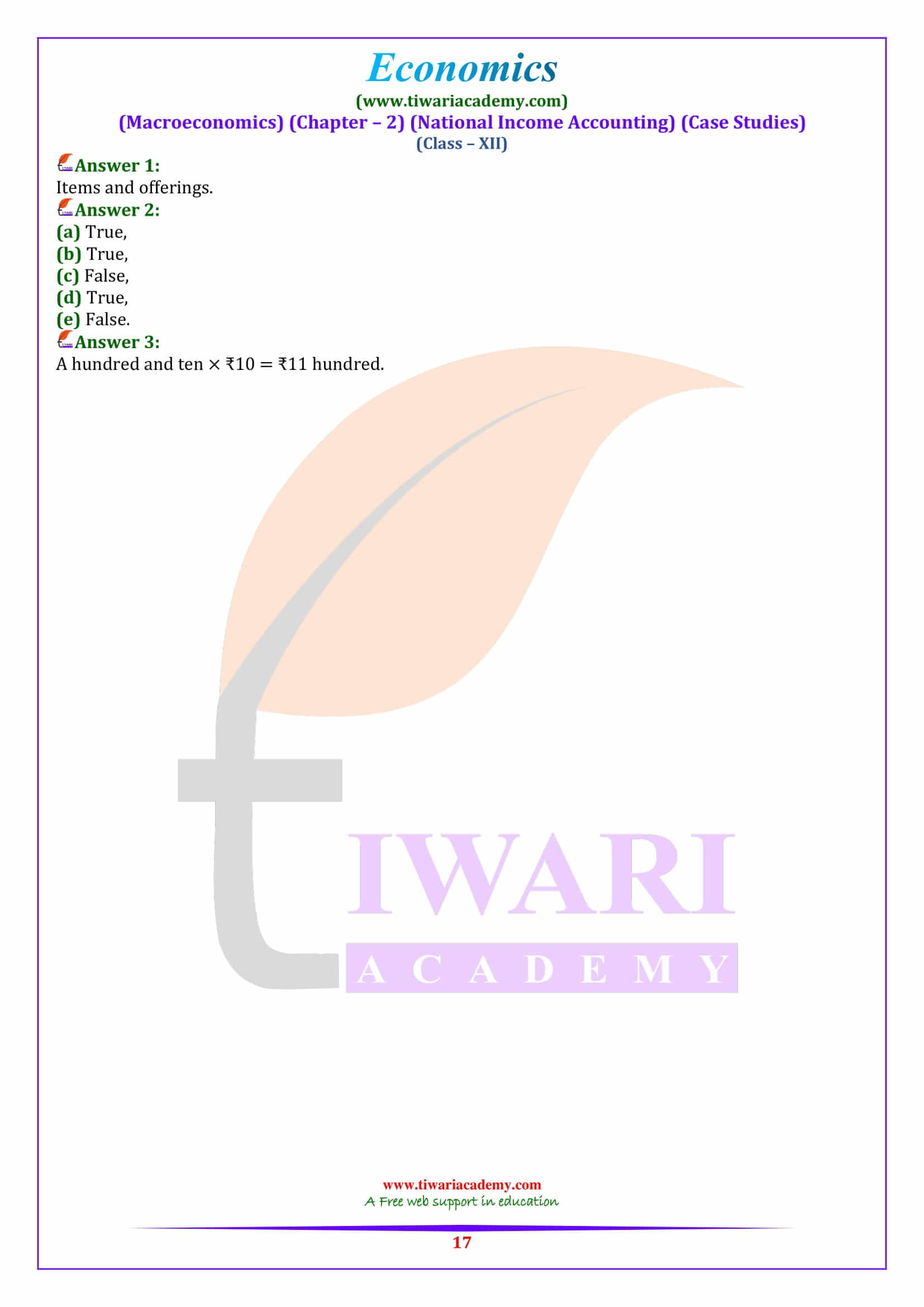NCERT Solutions for Class 12 Macroeconomics Chapter 2 Case Study Questions with answers in English Medium updated for CBSE session 2025-26. Class 12 Economics chapter 2 National Income Accounting Case Study MCQ and revision in Case Studies are given here with Case based questions.
Class 12 Macroeconomics Chapter 2 Case Studies Question Answers
Class 12 Macroeconomics Chapter 2 Case Study: 1
One of the settlers of the subject we name in economics moment, Adam Smith, named his maximum influential work – An Inquiry into the Nature and Beget of the Wealth of Nations. What generates the profitable wealth of a nation? What makes international locations rich or poor? These are a number of the central questions of economics. It isn’t always that international locations which might be endowed with a bounty of herbal wealth – minerals or timbers or the maximum rich lands – are naturally the richest international locations.
In fact, the resource rich Africa and Latin America have a number of the poorest international locations with inside the world, while numerous prosperous international locations have scarcely any herbal wealth. There changed into a time while possession of herbal coffers changed into the maximum crucial consideration however indeed additionally, the resource had to be converted via a product system. The profitable wealth, or well- being, of USA consequently, doesn’t inescapably depend at the bare possession of coffers; the factor is how those coffers are used in producing an inflow of product and how, as a consequence, earnings and wealth are generated from that system.
- Question 1:
The profitable wealth, or well- being, of a country doesn’t inescapably depend at the bare possession of ______. - Question 2:
State a few central questions of economics. - Question 3:
What’s herbal wealth? - Question 4:
Do the herbal coffers of a country define its wealth? Give an illustration. - Question 5:
State whether or not True or False.
(a) Profitable wealth of a country relies upon at the possession of the coffers simplest.
(b) Adam Smith is one of the settlers of economics subject.
(c) Coffers are used in producing an inflow of product and earnings and wealth are generated from that system.
- Answer 1:
Coffers - Answer 2:
What generates the profitable wealth of a nation? What makes international locations rich or poor? These are a number of the central questions of economics. - Answer 3:
Timbers, rich lands, lands rich with minerals are a few exemplifications of herbal wealth of a country. - Answer 4:
No, the herbal coffers don’t define the wealth of a country. In fact, the resource rich Africa and Latin America have a number of the poorest international locations with inside the world, while numerous prosperous international locations have scarcely any herbal wealth. - Answer 5:
(a) False,
(b) True,
(c) True.
Class 12 Macroeconomics Chapter 2 Case Study: 2
In our current monetary placing this float of manufacturing arises out of manufacturing of commodities – items and offerings through tens of thousands and thousands of companies big and small. These companies’ variety from large organizations using a big wide variety of humans to unmarried entrepreneur companies. But what takes place to those commodities after being produced? Each manufacturer of commodities intends to promote her output. So, from the smallest objects like pins or buttons to the most important ones like aeroplanes, motors, large equipment or any saleable provider like that of the doctor, the legal professional or the economic consultant – the products and offerings produced are to be bought to the clients.
The customer can also additionally, in turn, be a character or an organization and the best or provider bought through that entity is probably for very last use or to be used in similarly manufacturing. When it’s far utilized in similarly manufacturing it frequently loses its function as that particular exact and is converted via an efficient system into any other exact. Thus, a farmer generating cotton sells it to a spinning mill wherein the uncooked cotton undergoes transformation to yarn; the yarn is, in turn, bought to a fabric mill wherein, via the efficient system, it’s far converted into fabric; the fabric is, in turn, converted via any other efficient system into an editorial of garb that’s then geared up to be bought subsequently to the clients for very last use. Such an object that is supposed for very last use and could now no longer by skip via any greater levels of manufacturing or ameliorations is referred to as a very last exact.
- Question 1:
What takes place to the commodity after being produced? - Question 2:
What takes place while an entity for very last use is once more used for similarly manufacturing to be converted into any other product? - Question 3:
Describe the system how cotton will become very last exact. - Question 4:
State whether or not True or False.
(a) Each manufacturer of commodities intends to promote her output.
(b) Goods and offerings produced through tens of thousands and thousands of small and large companies collectively shape a float of manufacturing.
(c) When an entity for very last use is once more used for similarly manufacturing to be converted into any other product, its traits stay identical.
- Answer 1:
Each manufacturer of commodities intends to promote her output. So, from the smallest objects like pins or buttons to the most important ones like aeroplanes, motors, large equipment or any saleable provider like that of the doctor, the legal professional or the economic consultant – the products and offerings produced are to be bought to the clients. - Answer 2:
When an entity is utilized in similarly manufacturing it frequently loses its function as that particular exact and is converted via an efficient system into any other exact. - Answer 3:
A farmer produces cotton after which sells it to a spinning mill wherein the uncooked cotton undergoes transformation into yarn; the yarn is then bought to a fabric mill wherein, via the efficient system, it’s far converted into fabric; the fabric is once more been converted via any other efficient system into an editorial of garb, that’s then geared up to be bought subsequently to the clients for very last use. - Answer 4:
(a) True, (b)True, (c) False.
Class 12 Macroeconomics Chapter 2 Case Study: 3
An object that is supposed for very last use and could now no longer by skip via any greater levels of manufacturing or ameliorations is referred to as a very last exact. Why will we name this a very last exact? Because as soon as it’s been bought it passes out of the lively monetary float. It will now no longer go through any similarly transformation on the fingers of any manufacturer. It can also additionally, however, go through transformation through the movement of the last purchaser. In fact, many such very last items are converted all through their intake. Thus, the tea leaves bought through the customer aren’t fed on in that shape – they’re used to make drinkable tea, that’s fed on. Similarly, maximum of the objects that input our kitchen are converted via the system of cooking. But cooking at domestic isn’t a monetary activity, despite the fact that the product concerned undergoes transformation. Home cooked meals isn’t bought to the marketplace.
However, if the identical cooking or tea brewing changed into accomplished in an eating place wherein the cooked product could be bought to customers, then the identical objects, along with tea leaves, could end to be very last items and could count as inputs to which monetary price addition can take location. Thus, it isn’t with inside the nature of the best however with inside the monetary nature of its use that an awesome will become a very last exact. Of the very last items, we will distinguish among intake items and capital items. Goods like meals and garb, and offerings like activity which are fed on while bought through their last clients are referred to as intake items or customer items.
- Question 1:
What is a very last exact? - Question 2:
Why it’s far referred to as a very last exact? - Question 3:
Fill with inside the blanks
(a) Most of the objects that input our kitchen are converted via the system of _____________.
(b) Cooking at ____________ isn’t a monetary activity.
(c) Many very last items are ___________ all through their intake. - Question 4:
What is intake or customer items? - Question 5:
What are the varieties of very last items?
- Answer 1:
An object that is supposed for very last use and could now no longer by skip via any greater levels of manufacturing or ameliorations is referred to as a very last exact. - Answer 2:
It is referred to as very last exact due to the fact as soon as it’s been bought it passes out of the lively monetary float. It will now no longer go through any similarly transformation on the fingers of any manufacturer. - Answer 3:
(a) cooking, (b) domestic, (c) converted - Answer 4:
Goods like meals and garb, and offerings like activity which are fed on while bought through their last clients are referred to as intake items or customer items. - Answer 5:
Final items can be prominent in types: Capital items and Consumption items.
Class 12 Macroeconomics Chapter 2 Case Study: 4
There are different items which are of long-lasting individual which might be used with inside the manufacturing system. These are tools, implements and machines. While they make manufacturing of different commodities feasible, they themselves don’t get converted with inside the manufacturing system. They also are very last items but they’re now no longer very last items to be in the long run fed on.
Unlike the very last items that we’ve taken into consideration above, they’re the essential spine of any manufacturing system, in assisting and permitting the manufacturing to take location. These items shape part of capital, one of the essential elements of manufacturing wherein an efficient organization has invested, and that they maintain to allow the manufacturing system to move on for non-stop cycles of manufacturing. These are capital items and that they step by step go through put on and tear, and accordingly are repaired or step by step changed over the years.
The inventory of capital that a financial system possesses is accordingly preserved, maintained and renewed in part or absolutely over the years and that is of a few significance with inside the dialogue so that it will follow. We can also additionally be aware right here that a few commodities like TV sets, motors or domestic computers, even though they’re for last intake, have one function in not unusual place with capital items – they’re additionally long lasting. That is, they’re now no longer extinguished through instantaneously or maybe quick duration intake; they have got a surprisingly lengthy existence in comparison to articles along with meals or maybe garb.
They additionally go through put on and tear with slow use and frequently want maintenance and replacements of parts, i.e., like machines additionally they want to be preserved, maintained and renewed. That is why we name those items customer durable. Thus, if we recollect all of the very last items and offerings produced in a financial system in a given time frame, they’re both with inside the shape of intake items (each long lasting and non-long lasting) or capital items. As very last items they do now no longer go through any similarly transformation with inside the monetary system.
- Question 1:
Which different items are utilized in manufacturing of commodities? - Question 2:
These are capital items and that they step by step go through _____________, and accordingly are repaired or step by step ____________ over the years. - Question 3:
What does TV sets, Computers, Mobiles etc. have in not unusual place with capital items? - Question 4:
What will we name commodities like TV sets, Computers, Mobiles etc.? - Question 5:
In what paperwork we will divide very last items and offerings in a financial system?
- Answer 1:
The items which are utilized in manufacturing of a commodity are of long-lasting individual. Tools, Implements and machines are a few examples of it. While they make manufacturing of different commodities feasible, they themselves don’t get converted with inside the manufacturing system. They also are very last items but they’re now no longer very last items to be in the long run fed on. - Answer 2:
put on and tear; changed - Answer 3:
Television sets, mobiles or computers, even though they’re for last intake, have one function in not unusual place with capital items – they’re additionally long lasting. - Answer 4:
These commodities aren’t extinguished through instantaneously or maybe quick duration intake; they have got a surprisingly lengthy existence in comparison to articles along with meals or maybe garb. They additionally go through put on and tear with slow use and frequently want maintenance and replacements of parts, i.e., like machines additionally they want to be preserved, maintained and renewed. That is why we name those items customer durable. - Answer 5:
If we recollect all of the very last items and offerings produced in a financial system in a given time frame, they’re both with inside the shape of intake items (each long lasting and non-long lasting) or capital items. As very last items they do now no longer go through any similarly transformation with inside the monetary system.
Class 12 Macroeconomics Chapter 2 Case Study: 5
Of the whole manufacturing taking location with inside the financial system a big wide variety of merchandise don’t emerge as in very last intake and aren’t capital items both. Such items can be utilized by different manufacturers as cloth inputs. Examples are metal sheets used for making motors and copper used for making utensils. These are intermediate items, normally used as uncooked cloth or inputs for manufacturing of different commodities. These aren’t very last items.
Now, to have a complete concept of the whole float of manufacturing with inside the financial system, we want to have a quantitative degree of the mixture stage of very last items produced with inside the financial system. However, with a purpose to get a quantitative assessment – a degree of the whole very last items and offerings produced with inside the financial system – it’s far apparent that we want a not unusual place measuring rod. We can’t upload metres of fabric produced to tonnes of rice or wide variety of motors or machines. Our not unusual place measuring rod is cash.
Since every of those commodities is produced for sale, the sum general of the economic price of those numerous commodities offers us a degree of very last output. But why are we to degree very last items simplest? Surely intermediate items are essential inputs to any manufacturing system and a sizable a part of our manpower and capital inventory are engaged in manufacturing of those items.
However, on account that we’re coping with price of output, we ought to understand that the price of the very last items already consists of the price of the intermediate items which have entered into their manufacturing as inputs. Counting them one after the other will cause the mistake of double counting. Whereas thinking about intermediate items can also additionally supply a fuller description of general monetary activity, counting them will relatively exaggerate the very last price of our monetary activity.
- Question 1:
What is the not unusual place measuring entity to have a complete concept of the whole float of manufacturing with inside the financial system? - Question 2:
Of the whole manufacturing taking location with inside the financial system a big wide variety of merchandise don’t emerge as in very last intake and aren’t ______ both. - Question 3:
Intermediate items are essential inputs to any manufacturing system and a sizable a part of our manpower and capital inventory are engaged in manufacturing of those items. (True/False) - Question 4:
Counting the price of intermediate items one after the other will cause the mistake of______. - Question 5:
What do we get thinking about intermediate items?
- Answer 1:
To have a complete concept of the whole float of manufacturing with inside the financial system, we want to have a quantitative degree of the mixture stage of very last items produced with inside the financial system. However, with a purpose to get a quantitative assessment – a degree of the whole very last items and offerings produced with inside the financial system – it’s far apparent that we want a not unusual place measuring rod. We can’t upload meters of fabric produced to tonnes of rice or wide variety of motors or machines. Our not unusual place measuring rod is cash. - Answer 2:
Capital items. - Answer 3:
True - Answer 4:
Double counting - Answer 5:
Considering intermediate items can also additionally supply a fuller description of general monetary activity, counting them will relatively exaggerate the very last price of our monetary activity.
